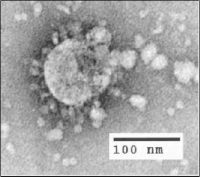
Photo from wikipedia
BACKGROUND It is unclear whether patients with severely disabling ischemic stroke (SDIS-that is, modified Rankin scale (mRS) scores of 3-5) benefit from non-acute endovascular recanalization (ER). OBJECTIVE To determine the… Click to show full abstract
BACKGROUND It is unclear whether patients with severely disabling ischemic stroke (SDIS-that is, modified Rankin scale (mRS) scores of 3-5) benefit from non-acute endovascular recanalization (ER). OBJECTIVE To determine the effect of non-acute ER or medical treatment in severely disabled patients with non-acute ischemic stroke (mRS scores of 3-5). METHODS Between January 2018 and August 2021, non-acute patients with SDIS and large vessel occlusion were collected from two regional stroke centers. Patients who met the inclusion and exclusion criteria were assigned to two groups based on whether they underwent ER (ER group) or not (medical group). The primary functional outcome was the mRS score at 90 days. The primary safety outcomes were the recurrence of stroke and mortality. RESULTS Of the 325 patients with hypoperfusion cerebral infarction caused by large vessel occlusion, 63 met the inclusion criteria (32 patients in the ER group, 31 patients in the medical group). A favorable outcome (mRS score ≤2) occurred more often in the ER group than in the medical group (59.4% vs 22.6%, respectively; OR=0.12, 95% CI 0.02 to 0.58; P<0.01). There were no significant differences in new-onset ischemic stroke (6.3% vs 3.2%, respectively; P=1.000), symptomatic intracerebral hemorrhage (12.5% vs 0%, respectively; P=0.113), or mortality within 90 days (6.3% vs 6.5%, respectively; P=1.000) between the two groups. Preoperative mRS scores (OR=7.34, 95% CI 1.56 to 34.5; P=0.02) and ER (OR=0.12, 95% CI 0.02 to 0.58; P<0.01) were significantly associated with outcome. CONCLUSION Our data suggest that patients with SDIS (mRS score 3-5) with smaller infarct cores and better collateral circulation can benefit from non-acute ER, with no additional perioperative complications or mortality.
Journal Title: Journal of neurointerventional surgery
Year Published: 2022
Link to full text (if available)
Share on Social Media: Sign Up to like & get
recommendations!